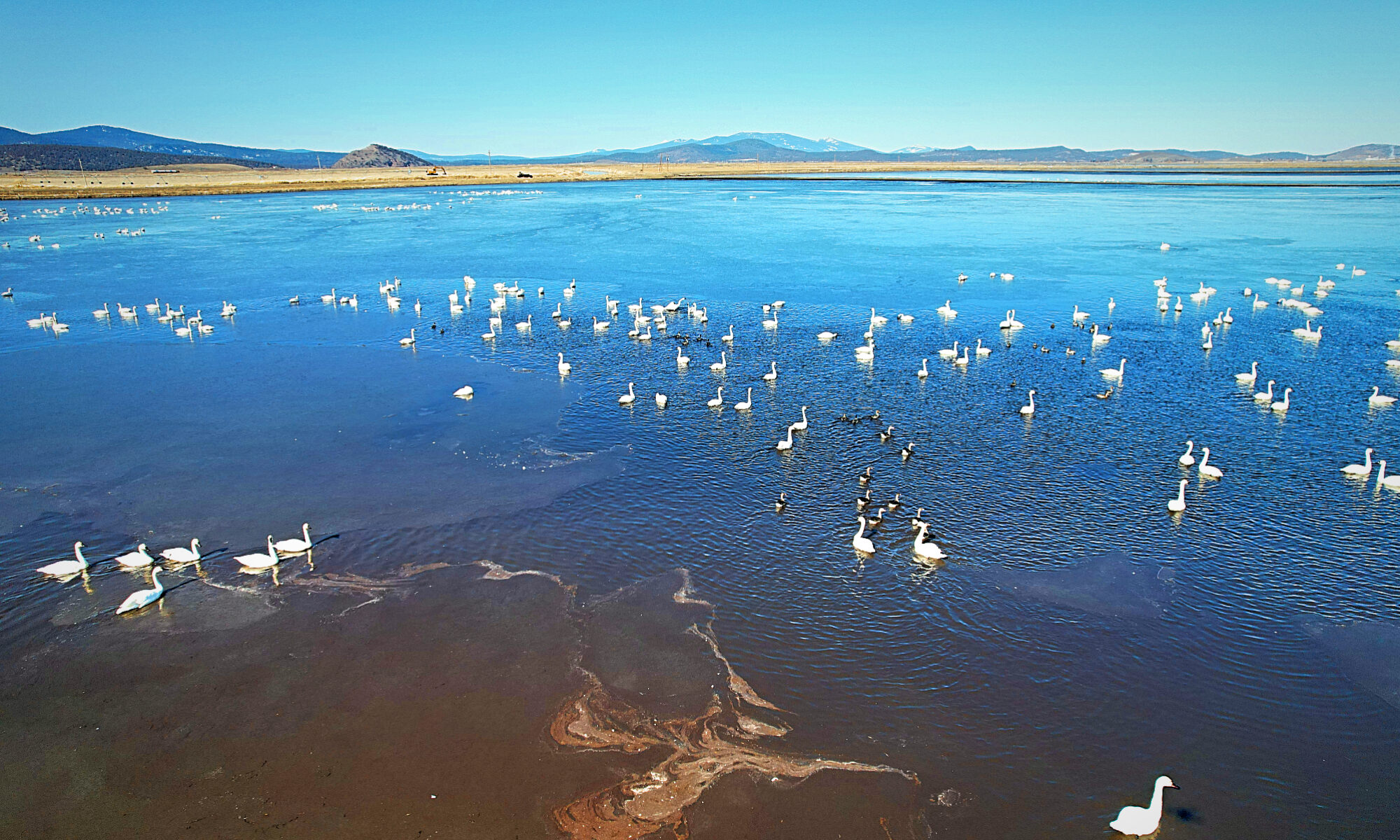Fall migration is upon us! Visiting the Klamath Drainage District, you’ll see the tell-tale “V”s of birds migrating along the Pacific Flyway and hear the calls of geese as they light in the district’s fields to rest on their long trip south. Depending on the time of day, flocks come in wave-after-wave, providing a visual feast for bird watchers and hunters alike.
With that in mind, it seems like a good time to take a look at the 2022 migratory bird numbers for KDD.
At the end of May, the numbers from the Klamath Basin National Wildlife Refuge Complex, 2022 bird survey of the Klamath Basin were released.
Klamath Drainage District landowners are proud that their fields and pastures provide important habitat for birds migrating on the Pacific Flyway. Between the droughts that have hit the Klamath Basin for the last several years, mismanagement of the Klamath Project, and then the historic shut-down of the Project and subsequent historic drying-up of Tule Lake and Lower Klamath National Wildlife Refuges by the Bureau of Reclamation, KDD patrons have seen their lands as a safe haven for migratory birds looking for a pitstop on along the Pacific Flyway.

Though anecdotal evidence supports our belief that KDD plays a vital role for Klamath Basin wildlife and migratory birds. Thanks to the United States Fish and Wildlife Service (USFWS), we are able to share actual numbers of what we’re seeing in the field, and whether or not our claims of KDD’s importance to the Pacific Flyway are supported.
With the numbers provided by USFWS, we’re able to look at a snapshot that shows just how vital KDD is to birds. Looking at November 3rd, the peak of migration through the Klamath Basin, the Klamath Drainage District had over 180,000 birds on its lands. That’s significant because at that time Lower Klamath and Tule Lake National Wildlife Refuges had no water in them, meaning that the number of birds counted for Tule Lake and Lower Klamath were counted in KDD. And while we’re proud that KDD could help with facilitating the waterfowl migration, if you look at past migration numbers, there’s still quite a bit of work to be done in the Klamath Basin in regards to the Pacific Flyway.

Pouring through the bird count numbers on November 3, 2022, a few interesting facts pop up:
-
- Sandhill cranes – 1,948 were counted. Last fall we saw large flocks of these giant birds in the fields, casually counting hundreds of them at a time.
- 170,032 ducks were found in KDD. In comparison, that day 93,540 were counted on Upper Klamath Lake.
- Looking at geese, a total of 8,404 were attributed to Lower Klamath. If we compare that to Upper Klamath again, 1,798 were counted there.
- Of the 170,032 ducks counted in KDD, which breed was represented the most? The Northern Pintail, with 137,262 birds counted. Next was our favorite green-headed friend the Mallard, with 8,852 counted.
Evaluating the overall numbers shared by the USFWS and the Klamath Basin National Wildlife Refuge Complex, the number of migratory birds passing through the Klamath Basin seems incredible. However, this represents only 5% of what the Klamath Basin could support. The region is hugely important for the Pacific Flyway, and when actions by the Federal government leave Klamath Basin refuges dry, agricultural lands such as KDD become increasingly vital. Now imagine if our refuges hadn’t been allowed to go completely dry by the Bureau of Reclamation and the Klamath Project had been operated as designed.

KDD landowners should be proud of the work they and the board do on behalf of Klamath Basin wildlife and the Pacific Flyway. The numbers show how important agricultural lands are to the ducks and geese migrating through the Klamath Basin, especially during these times. Add the partnerships and conservation projects the district is working on, such as KDD’s restoration plan, there’s a lot of remarkable things happening in the Klamath Drainage District.
Before wrapping this up, we’d like to extend a big thank you to John Vrandenburg for taking the time to share this information and walking us through the data. Thank you very much, John!

